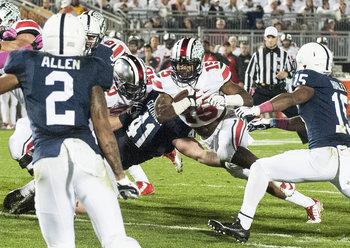
Entertainment
Entertainment is any activity that holds people's attention because it is fun or interesting. This includes things like video games, movies and gossip that people find stimulating and easy to focus on. Many individuals may also find books, music and art entertaining such that they can effortlessly focus for hours.Motivation
Motivation is a desire to perform a task and/or reach a goal. This increases attention span considerably. For example, a software developer who is intrinsically motivated because they have strong desire to write elegant computer code may focus for many hours on work such that they forget to eat. Likewise, extrinsic motivation such as a promise of financial reward can increase attention span towards a goal.Self-Discipline
Self-discipline is the ability to push yourself to do what is required to reach a goal even if it is difficult, uninteresting and lacks any immediate reward. Self-discipline can be cultivated and improved such that individuals may increase their attention span to many hours even if a task is extremely unstimulating. For example, a tax auditor who can focus on a company's numbers for many hours in a meeting to drive the company's accountants to exhaustion whereby they begin to admit things just to end the meeting.Information Overload
Information overload is a term for an individual who is exposed to information rich environments such as a social media feed. In this context, attention span drops considerably as an individual may efficiently scan media for interesting information and jump from one piece of content to the next in rapid succession. This can be contrasted with someone who gets a newspaper delivered and reads it from front to back each morning. The stark contrast in focus between these two habits has led to dubious claims that the average human attention span has dropped to a few seconds. This fails to make the distinction between an individual who is reading a good article and someone who is efficiently processing an information source that is mostly low quality information. An individual who scans 200 social media posts a minute may also be in the habit of reading fiction uninterrupted for hours at a time.Listening
The ability to listen to a speaker with intent to understand for a prolonged period of time is a type of attention span. This is a social process that may not correlate with an individual's attention span in other areas. For example, a good listener who has a low attention span for solving math problems.Stress & Distractions
Stress and distractions such as noise may reduce attention span. The ability to remain focused on a task when facing stress is known as personal resilience. This can be cultivated and improved.Tiredness & Pain
Sleepiness and physical pain are known to reduce attention span. For example, a person who has poor sleeping habits may find than they have difficulty listening in meetings.Task Difficultly
Attention span typically has an inverse relationship with task difficultly. For example, a brilliant English student who struggles with math may fly through their English homework without distraction but find it difficult to focus on their math homework.Culture
The norms and expectations of a culture impact attention span. As a basic example, an organization where smartphones are strictly banned from meetings versus a culture where employees regularly multitask when listening.Transient Attention
Transient attention is a common condition where an individual is partially focused on a task with frequent but brief interruptions. For example, a student who checks their phone 40 times while writing a book report over a 3 hour period.Multitasking
Multitasking is the purposeful use of transient attention as a productivity strategy. There was much excitement about multitasking as a time management approach in the late 1990s that has since faded with the term increasingly viewed as having negative connotations. In many cases, multitasking is a requirement of a role or an unavoidable reality of life such as a parent who balances housework, caring for children, studying for an exam and completing an analysis for work in one evening.Selective Sustained Attention
Focusing on a single task or activity. For example, a writer who can write entire chapters in one sitting by blocking off time and disconnecting from all distraction.Flow
Flow is a state of intense mental focus that feels effortless. A person in a state of flow may feel that time has passed quickly as they are so immersed in a task that they fail to notice anything else. For example, a soccer player who is completely absorbed in a game such that a 45-minute period feels like 5 minutes. Flow requires intrinsic motivation or a high state of self-discipline whereby an individual no longer feels that extended periods of focus are difficult.Hyperfocus
Like flow, hyperfocus is a state of intense mental concentration. Unlike flow, hyperfocus is almost always described in a negative light as being a problem. Hyperfocus can relate to a topic or subject as opposed to a task. For example, an individual who thinks about nothing but soccer who finds it difficult to think about anything else for long.Mindfulness
Mindfulness is the process of bringing one's full attention to the moment including awareness of one's thoughts, feelings, body and surrounding environment. This can be viewed as a philosophy or principle that advocates gentle acceptance of the present over thinking about the past and dreaming of the future. Mindfulness is also about being both internally and externally aware. For example, listening to someone with full attention while also being aware of your own thoughts and emotions in the moment. This is an advanced state of attention.Summary
The following is a basic overview of attention span with additional examples:
| Overview: Attention Span | ||
Type | ||
Definition (1) | The amount of time an individual can focus on a task, activity or interaction without distraction. | |
Definition (2) | The ability to devote your full attention to the demands of the moment. | |
Related Concepts | ||
































